An Entrepreneur’s Guide to Self Management
By True Ventures, August 12, 2010
When I started working on my current startup, there were times when I would end the day, look back at what I accomplished and just feel disappointed in myself. I spent the day busy, but the major things I needed to make progress on remained incomplete.
Raise your hand if you know what I am talking about.
I was quickly faced with the reality that without a boss to report to, peers to collaborate with or a team to manage, I was left in a quiet, lonely vacuum where my productivity mattered only to me. Combine this with constant distraction from blogs, Facebook, Twitter and just about everything else in the Internet and I was performing at suboptimal levels. Over time I developed better self management practices to help me focus, filter and be more accountable. And while solo entrepreneurship makes self management essential, in this always-on, distracto-conomy, most of us can benefit from better methods for staying productive as our companies and teams grow.
Before I explain my approach, it is important to note the hard part about a personal productivity plan, isn’t the plan itself. It is doing it. Much like diets or workout routines, the plan is the easy part. Doing it every day is the challenge. Therefore, for a plan to work it must be very, very simple and lightweight. After all, this is supposed to make you more productive, not give you more to do. And secondly, it must fit your personal style. It must feel as natural and easy as possible.
My personal recipe is not novel or new, but a mash up David Allen, Stephen Covey, Agile/Scrum practices with insights from great ideas and posts from those such as Marc Andreseen, Mark Suster and Merlin Mann. Every morning I sit down and plan my day. I often do it sitting in a cafe with a cup of coffee. The less distraction the better. The more space for reflection the better. I currently use Things for the Mac for to do list management, but there are a million different task list apps out there.
UPDATE MY TASK INBOX
My task inbox is the waiting room for anything I want to accomplish. Big tasks, small tasks, important tasks, future tasks, old tasks, new tasks, work tasks and personal tasks. It is the big laundry list. Everything goes in here. Pay bills, send emails, interview candidates, work on strategy, make phone calls… everything. It gets all that clutter out of my head and frees up cognitive space. Every morning I start by updating the inbox and broadly capturing what stuff I need to get done.
CREATE MY LIST FOR THE DAY
I then look through the INBOX and identify all the things I want to get done for the day. I then move them to my TODAY list. These are the urgent & important items or the important & nonurgent items. However, while anything can go in the INBOX, only discrete, finite tasks that require less than 8 hours to complete can go in the TODAY. For instance “work on funding” can go in the INBOX, but not the TODAY list. “Followup Larry at Acme Capital” or “Update 50 year financial plan” would be better discrete tasks for the TODAY list.
It is important that the TODAY is realistic. Less is more. if I crank through it faster than expected, I can always go back to the inbox and add more. A short, real list helps filter out distraction and helps you focus on important stuff. This list is as much about what you are not doing, as what you are doing.
SEQUENCE
I then sequence my list. Not just prioritize. This is possibly the most important part of the process. I actually put tasks in the sequential order of which I will complete them. This is my roadmap for the day. I believe inefficiency exists largely in the spaces between completing one task and starting another. It is in this gap we get distracted, avoid doing dreaded tasks and generally screw around. By sequencing tasks there is no ‘figuring out what to do next,’ I just move into the next thing. For added efficiency, I often group my tasks by like activity. For example, I will do all my email tasks at once.
DO IT
I then make a commitment to myself to accomplish this plan as best possible and then get to it, checking off items as I go. And come next morning, I grab that coffee and start over again.
3 LESSONS LEARNED
- I like mixing personal and professional stuff together. There is only one me. One focus of attention. So having one list works better. And after all… what entrepreneur has a personal life totally independent of their business anyhow?
- I front load stuff I don’t like doing and reward myself with things I am excited to do at the end. This gives me extra motivation to knock the hard/less enjoyable stuff out of the way.
- I try to close all the windows and apps that are irrelevant for the task at hand. This helps reduce distractions.
Now stop wasting time reading blog posts and get back to work. Don’t you have anything better to do right now?
This post was written by Tim Roberts, CEO & Founder of Infectious, a True Ventures Portfolio Company.




